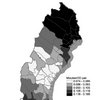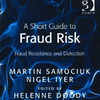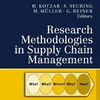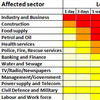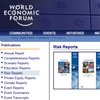 Finally, almost to the day six months into my new job, a genuinely new post on husdal.com. My new line of work has kept me so busy that I haven’t had much time to think about supply chain risk, let alone post about. Besides, my new job is all about business continuity and crisis management, and I haven’t even read a single article on supply chain risk since I came here, so if there is to be a new post, it has to be about crisis management. And frankly speaking, supply chain risk is probably going to be a very seldom topic on this blog from now on, unless popular demand wants it otherwise.
Finally, almost to the day six months into my new job, a genuinely new post on husdal.com. My new line of work has kept me so busy that I haven’t had much time to think about supply chain risk, let alone post about. Besides, my new job is all about business continuity and crisis management, and I haven’t even read a single article on supply chain risk since I came here, so if there is to be a new post, it has to be about crisis management. And frankly speaking, supply chain risk is probably going to be a very seldom topic on this blog from now on, unless popular demand wants it otherwise.
What is a crisis?
You see, part of my job at Southern Region office of the Norwegian Public Roads Administration is to develop and maintain crisis management plans. One of the important questions to ask when developing contingency plans is the question “When is does a situation turn into a crisis? When is a crisis really a crisis? What makes a crisis a crisis? For that I need to define the term crisis.
An “ordinary” contingency is not a crisis
Obviously, within the Norwegian Public Roads Administration (or Highways Agency in the UK) there are contingency plans for a wide range of unexpected situations such as accidents, heavy snowfall in winter, flash floods in summer to mention but a few. There are also detailed detour plans if this or that link is closed. These are what I call “ordinary contingencies” that happen every day so to speak and that do not warrant extraordinary attention.
An extraordinary contingency is a potential crisis
It is only when the ordinary contingency plans fail or when the ordinary contingency measures are not enough that we have potential crisis at our hands. Hence I came up with this definition of a crisis:
A crisis is a situation following an unwanted event that cannot be resolved through an organisation’s ordinary contingency efforts, but that requires a coordinated and extraordinary effort across all/many organisational units, and often additional assistance from external agents.
This definition is translated from Norwegian and my choice of words in English may not be perfect or to the point, but I hope it brings the message across.
When incidents turn into crises
Essentially, what the crisis definition says is that any eventuality that is not covered in a contingency plan can become a crisis, simply because one does not know what to to, since it is not planned for or prepared for. However, even eventualities that are covered can turn into crises, if they are not managed properly. And importantly, even if an eventuality is not covered it may not always turn into crisis, if it is managed as it should be, despite the lack of contingency plan guidance.
Do you agree/disagree?
I’d love to hear you opinion on my definition of crisis. lease comment below or contact me directly.
Related posts
- husdal.com: A crisis is not an opportunity

